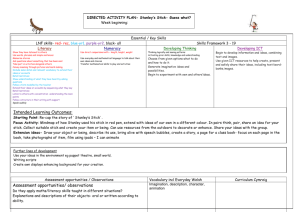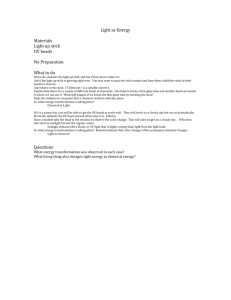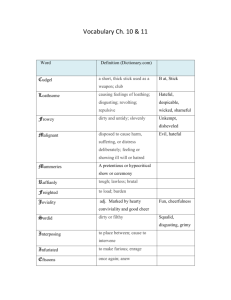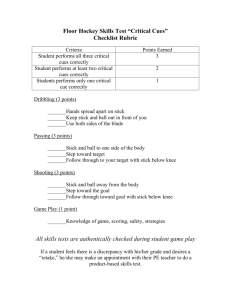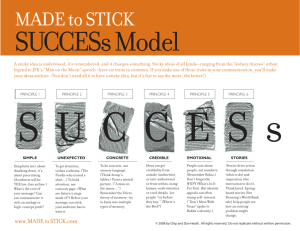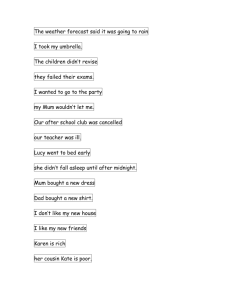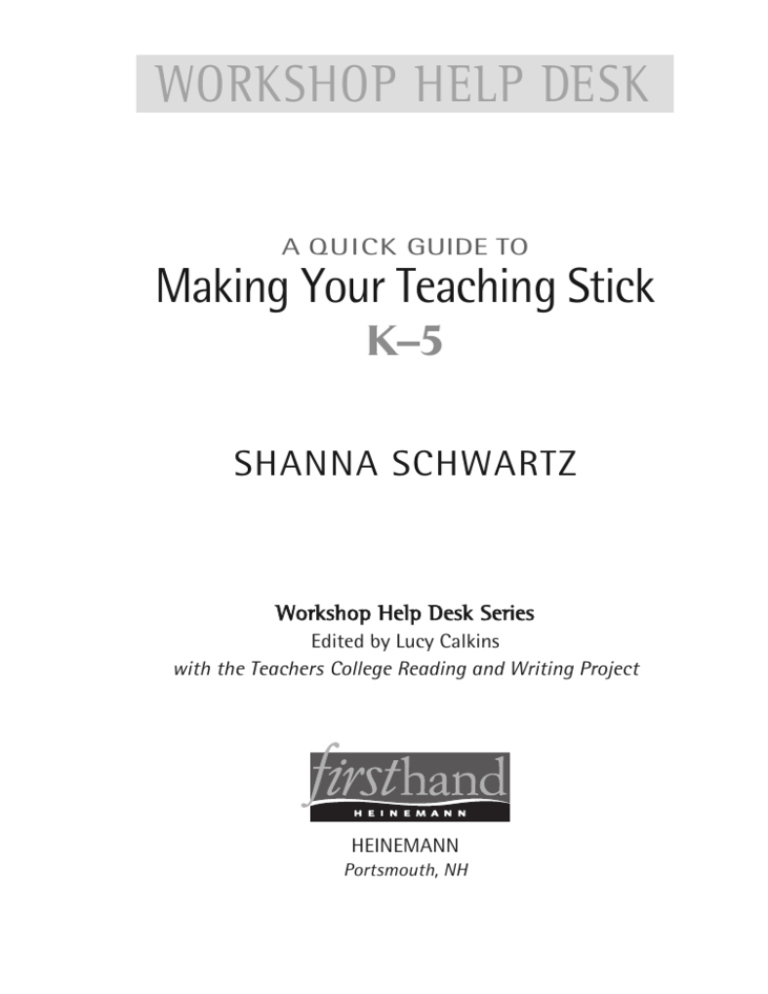
WORKSHOP HELP DESK
A QUICK GUIDE TO
Making Your Teaching Stick
K–5
SHANNA SCHWARTZ
Workshop Help Desk Series
Edited by Lucy Calkins
with the Teachers College Reading and Writing Project
HEINEMANN
Portsmouth, NH
An imprint of Heinemann
361 Hanover Street
Portsmouth, NH 03801–3912
www.heinemann.com
Offices and agents throughout the world
© 2008 by Shanna Schwartz
All rights reserved. No part of this book may be reproduced in any form or by
any electronic or mechanical means, including information storage and retrieval
systems, without permission in writing from the publisher, except by a reviewer,
who may quote brief passages in a review.
Library of Congress Cataloging-in-Publication Data
Schwartz, Shanna.
A quick guide to making your teaching stick, K–5 / Shanna Schwartz.
p. cm. — (Workshop help desk series)
Includes bibliographical references.
ISBN 13: 978–0–325–02596–4
ISBN 10: 0–325–02596–7
1. Elementary school teaching. 2. Effective teaching. I. Title.
LB1555.S255 2008
372.1102—dc22
2008027306
SERIES EDITOR:
Lucy Calkins and the Teachers College Reading and Writing Project
Kate Montgomery
PRODUCTION: Elizabeth Valway
COVER DESIGN: Jenny Jensen Greenleaf
COVER PHOTO: Peter Cunningham
INTERIOR DESIGN: Jenny Jensen Greenleaf
COMPOSITION: House of Equations, Inc.
MANUFACTURING: Steve Bernier
EDITOR:
Printed in the United States of America on acid-free paper
12 11 10 09 08 VP 1 2 3 4 5
to my husband
d
CONTE NTS
ACKNOWLEDGMENTS
INTRODUCTION
. . . . . . . . . . . . . . . . . . . . . . . . . . . . . . . . . . . . .viii
. . . . . . . . . . . . . . . . . . . . . . . . . . . . . . . . . . . . . . . . . . . . .x
1
The Stickiness Principles
2
Principle 1: Children Learn What They Are
Ready to Learn . . . . . . . . . . . . . . . . . . . . . . . . . . . . . . . . . . . . . . .15
3
Principle 2: Children Learn When They
Are Engaged . . . . . . . . . . . . . . . . . . . . . . . . . . . . . . . . . . . . . . . . . .33
4
Principle 3: Children Benefit from Physical
Representations of Their Learning . . . . . . . . . . . . . . . . . . . .53
5
Principle 4: Children Learn Through—and Love—
Repetition . . . . . . . . . . . . . . . . . . . . . . . . . . . . . . . . . . . . . . . . . . . .74
WORKS CITED
. . . . . . . . . . . . . . . . . . . . . . . . . . . . . .1
. . . . . . . . . . . . . . . . . . . . . . . . . . . . . . . . . . . . . . . . . . . . .88
BOOKS RECOMMENDED BY THIS AUTHOR
. . . . . . . . . . . . . . . . . .89
vii
CHAP T E R
ONE
The Stickiness Principles
Are there smaller, subtler, easier ways to make something stick?
— M AL COL M GL AD WE L L
C
hildren, like all humans, do not just learn things whole
and then do those things perfectly from that day on,
forever. Humans learn through a start-and-stop
process that frequently involves (partially) learning something
and losing it and then—we hope—learning it again and trying to do it as an approximation, and maybe learning it again,
until it finally sticks. One of our jobs as teachers is to provide
the numerous iterations needed for a lesson to stick, thus
helping children move through the approximation period into
solid comprehension and use of a new concept.
Making our teaching stick—more often or with more students—therefore requires a good understanding of the
normal process of learning and losing knowledge and a good
1
understanding of why, where, and when the four stickiness
principles work.
First, let me name these stickiness principles plainly:
x Children’s engagement and learning are dependent on
a high level of understanding; they are distracted most
when their understanding breaks down. In order for
teaching to stick, children need to be taught what they
are ready to learn.
x Children learn best when they are engaged and active
participants in their own learning. In our minilessons,
we can create engagement in three major ways: by
telling little stories to connect our teaching to their
lives; by using gestures that get their bodies active; and
by asking them to act and to role-play.
x Children may show great interest in our teaching, but
if they don’t have something to remind them of that
teaching later, they often forget it. We need to provide
physical representations of our teaching for children to
hold onto as they apply their newfound knowledge.
x Children learn through—and love—repetition. We need
to use the power of repetition to create situations
where children approximate and accumulate greater
and greater understanding.
Let’s explore these further by examining each principle and
defining the role of each principle in turning our lessons into
our students’ habits.
2
d
A QUICK GUIDE
TO
MAKING YOUR TEACHING STICK
Children Learn What They Are Ready to Learn
Children are more attentive and learn more when they understand more. Most people associate this principle with Lev
Vygotsky (1978), who said we learn best when the new material is in our “zone of proximal development”—that is, by determining that which the child can do with just a little help or
repetition, we can determine not only what he knows now but
also what he will learn next. According to Vygotsky, “The zone
of proximal development defines those functions that have not
yet matured but are in the process of maturation, functions
that will mature tomorrow but are currently in an embryonic
state” (86). The idea of the ZPD implies that if we can determine what a child is ready to learn and then teach that, we
will have her closest attention. Therefore, our work becomes
determining our students’ ZPD and then teaching material
that falls within that zone of understanding. In other words,
when the lesson adds only a manageable quantum of new
material to what our students already understand, our teaching stays with them—it sticks.
In order to teach within children’s zone of proximal development, we can draw on two overarching concepts:
x We can think about any skill as a ladder, that is, we need
to be able to imagine what a child does at an emergent
level, what he does as he becomes more skilled, and so
on. Our teaching aims to help students acquire increasingly sophisticated writing strategies one incremental
element at a time. Our goal is not the ultimate; if we
were teaching perfection, we’d probably be reaching too
The Stickiness Principles
d
3
far or trying to have students acquire too many new
ideas in one lesson.
x We can aim to create learning scaffolds, through which
we provide heavy support at first, then remove this support one small element at a time. This allows learners to
acquire the whole writing strategy in an incremental
way. That is, in order to help a learner move along the
line of growth, we release scaffolds as the child moves
toward using the skill with increasing independence.
Let’s look more closely at each of the stickiness principles,
exploring how each principle applies to teaching writing to
K–2 youngsters.
Children Learn Best When They Are Engaged and
Active Participants in Their Own Learning
Engagement is key to making teaching stick. The challenge is
to both get and keep children’s attention. In this book we’ll look
at how to get children engaged by using stories—stories about
ourselves, our classrooms, our students. Jerome Bruner, author
of the foundational book The Process of Education, says that
children “turn things into stories, and when they try to make
sense of their lives they use the storied version of their experience as a basis for further reflection. If they don’t catch things
in narrative structure, it doesn’t get remembered very well”
(1999, 56).
Next, we will consider how to keep children engaged
through movement and play.“Physical movement actually has
4
d
A QUICK GUIDE
TO
MAKING YOUR TEACHING STICK
an inordinate amount of impact on creating and accessing
memory. . . . Movement helps cement memory!” (Jones 1999, 1).
Kids love few things more than wiggling their bodies, making
meaningful hand gestures, and acting out roles, and we can
draw on this propensity to not sit still to help them learn.
Here are some methods we use to engage children:
x Using stories to draw in our learners. Stories can be a powerful connector between our children and the strategies
we want to teach them.
x Using gestures to create gross motor memory. This can help
strategies stick with students even after the lesson is
over. Using the same gestures throughout the day can
also remind and coach students to carry the strategies
that they use during writing time across the curriculum,
thus solidifying the strategies.
x Using role-playing and acting to move children from talking
about strategies to trying them on their own. Pretending is
a natural part of young children’s lives, and we can use
their ability to pretend to help them play their way into
writing with feeling and clarity.
Children Benefit from Physical Representations
of Their Learning
Just as they benefit from being physical learners, children also
benefit from having access to physical objects related to their
learning. Adults who are learning something new often take
notes to cement our learning. These notes are a way of keeping
The Stickiness Principles
d
5
us attentive as we learn and a way of recalling important information when we need it. In taking notes, we turn the words
of the presenter into signs and symbols we can use to recall the
information later. Why does this work? Vygotsky explains it
this way: “When a human being ties a knot in her handkerchief as a reminder, she is, in essence, constructing the
process of memorizing by forcing an external object to remind
her of something; she transforms remembering into an external activity. . . . The very essence of human memory consists in
the fact that human beings actively remember with the help of
signs”(1978, 51).
Note taking, however, does not work for our youngest children. Our five-, six-, and seven-year-old students simply don’t
yet have the writing skills to take notes that would help. In
fact, if we asked children to take notes as they learned, they
would spend all their energy figuring out how and what to
write and would therefore have no energy left for learning the
concept or idea we were teaching. So what do we do? As
Vygotsky suggests, we can help children by making notes and
representations for and with them. Most teachers make
poster-size charts and hope these serve as physical representations of learning.
Charts are fantastic classroom tools because they create a
sign to help children remember, but they work only if we make
an effort to be sure they are memorable! Often they are not in
children’s faces enough to help them implement new ideas.
Just as advertisers use a diversity of media to get their ideas to
stick with consumers, we need to do the same in our classrooms. We will explore ways to create more accessible and
memorable variations of the classroom chart, so that children
6
d
A QUICK GUIDE
TO
MAKING YOUR TEACHING STICK
understand charts in the moment and can access that understanding again and again as needed. We will do this through
two main methods:
x using pictures, photographs, catchphrases, and student
work to help children hold onto our teaching
x using folder-size charts and individual cards that can be
customized to remind different children to use different skills and strategies, drawn from the larger wholeclass charts
Children Learn Through—and Love—Repetition
The principle of repetition is not altogether new to those of us
who teach. This is the ZPD at work! We realize that learning
is not linear, that there is always a period in which we are trying to do something, but not necessarily doing it with success.
Even more important, learning and forgetting, which we so
often witness, is actually a symptom of nonlinearity. Often, as
teachers, we are frustrated by this. But children don’t truly forget what we have taught; they just have not yet learned to
apply it yet. If we want them to apply the learning, we need
to give them time. Repetition is the most important process
through which we can translate time into learning.
Successful repetition in the classroom is more complicated
than teaching the same lesson twice. It involves a degree of
sophistication and variation. We can use repetition in four
contexts:
The Stickiness Principles
d
7
x
x
x
x
in the minilesson
inside the unit
from unit to unit
throughout the day
A Sticky Minilesson
There are many ways to apply the four major principles in our
teaching, and certainly any minilesson can encompass each of
the principles. In the following example, the teacher has carefully crafted a minilesson that applies each principle. In each
of the following chapters, we will take a closer look at how
she does this.
Connection
The teacher began, “Writers, remember how on Monday,
Jordan shared a picture from his all-about book with us during the share? We were so impressed with how much he
taught us in a single picture.” The teacher held up Jordan’s
picture.“Remember how Anna took one look at it and said,
‘I didn’t know that dolphins had teeth!’ We decided that
authors of all-about books use small details in the pictures to
teach more information. After looking at Jordan’s piece, we
started to notice how much the pictures in many of your
books taught.
“Yesterday, many of you worked so hard to make your
pictures detailed so they could teach readers. When I walked
over to Desiree, she gave me a little quiz. She said, ‘I put four
8
d
A QUICK GUIDE
TO
MAKING YOUR TEACHING STICK
things you can learn in this picture. Can you find them?’ It
was funny. But then I could only find three things, and
Desiree had to show me the last one. But you know what?
That Desiree is one smart cookie! Before I left, she put labels
in her picture and drew arrows to different items on it so as
to make sure her reader could find everything she was
teaching. Take a look.” The teacher held up the page from
Desiree’s book.
“Today, I want to teach you that we all can be like Desiree.
When we, as writers, want to be sure that our readers learn all
the things we hope to teach in a picture, we can add labels
with arrows.”
Teach
The teacher continued, “Let’s take a look at this mural we
made in science when we wanted to teach people about our
pet iguana, Beatrice. Do you remember how we first drew
the general stuff, and then for lots of days, different children
worked on the mural, adding specific details? For example,
DaQuan added a squash flower, making it over the iguana’s
head. That wasn’t just a pretty picture, was it? You were
adding information; you were teaching people that iguanas
eat flowers and other plants. It could be, though, that some
people will miss your lesson! So, watch me as I add labels
with arrows to make sure that the reader will notice the important information you guys added.” The teacher and each
child put a finger to their eye to show that they were watching. This is a gesture they agreed upon to indicate that they
are watching something.
The Stickiness Principles
d
9
“Let’s see. I know DaQuan added the squash flower hoping people would learn from this detail, so I’ll add an arrow
and write what DaQuan wants the people to learn. Hmm . . .
I could say just one word: ‘food.’ Or I could say, ‘Flowers and
plants are Iguana food’(so they know it’s not just squash flowers that iguanas eat).
“Hmm . . . what else? Well, here is her water; she needs it
for bathing and drinking. I could label that.” The teacher wrote
“water for baths and drink” and then drew an arrow to the
water.
“Writers, did you notice that I studied the picture, found
a detail that we hope will teach, then made a label with an
arrow and wrote a couple words to help readers learn the
information?”
Active Engagement
“Now it is your turn to try. Remember, look closely at the picture, find something we can teach people about Beatrice, and
think about the label you would add with an arrow.” The
teacher put her finger to her temple and made a “thinking
face.” The children did the same.
“When you have an idea about something important to
label, put a quiet thumb on your knee.” Thumbs popped up
right away. “Turn to your partner and share your ideas.”Children chattered away for a bit and the teacher called them back
quickly.
“Great, you have a lot of ideas! Noya, will you share your
thought?”
“We can put ‘rock’ on there.”
10
d
A QUICK GUIDE
TO
MAKING YOUR TEACHING STICK
“What does ‘rock’ teach the reader about our iguana? Is it
important to notice?”
“Yeah, ’cause she scratches her claws on the rock to make
them sharp!” Other children nodded vigorously.
“Great! So you want to teach people that iguanas use rocks
to sharpen their claws. Come on up and add that. You could
even write ‘rock for claws’.”
“While Noya writes her label the teacher went on,“whisper to the child next to you to point out another label that we
can add.” The students talked to their partners again.
“Thumbs up if you have an idea.” Students turned their
attention back to the teacher, and Noya returned to her spot
on the rug. “Daisean, what were you thinking?”
“We can write ‘screen’ at the top because that lets the light
in! Iguanas need light to live.”
“Great, come on up!”
Daisean added the label.
“Fabulous! You all did a great job of looking closely at the
picture, finding something important to teach readers about
our iguana, and thinking about the label you would add with
an arrow.”
Link
“So, writers, I am going to take this newly labeled mural of
Beatrice’s habitat and put it on this chart.” The teacher taped
the picture onto an already titled piece of chart paper.
She pointed as she read the title of the chart. “‘Ways to
Make Our Pictures Teach More.’ First, we need to list the
strategy of adding lots of details to the picture. I’ll write,
The Stickiness Principles
d
11
‘Details, Details, Details.’ Since we like to be able to act out
our strategies, let’s act that out like this.” The teacher tapped
her index finger to her thumb, then her middle finger to her
thumb, and then her ring finger. As the children tried the
motion, the teacher wrote, “Details, Details, Details,” at the
bottom and circled a few details in the mural to illustrate the
idea.
“Now I want to write the strategy that we learned today:
label information with an arrow. What would be a fun way to
act that out?” The teacher paused to think, and children
started to whisper. Finally the teacher looked up and made
eye contact with Sam.
“We could just draw an arrow with our fingers in the air,”
he suggested. Immediately, a few children started to mime
drawing an arrow. The teacher smiled and quickly wrote,
“Label information with an arrow,”on the chart. She drew an
arrow to an example of this on the picture.
“Now let’s read our chart together.”
The students joined in as their teacher read and pointed
to the chart. “‘Ways to Make Our Pictures Teach More: Details, Details, Details.’” The children mimed this with their
hands.
“‘Label information with an arrow.’” The children mimed
this also.
“So, writers, anytime you want to add more information to
your pictures, you can add details like you have been doing
and you can use labels with arrows to point out your details.
Off you go!”
As children got started, the teacher moved the chart so
children would be able to see it while sitting in their seats.
12
d
A QUICK GUIDE
TO
MAKING YOUR TEACHING STICK
FIG. 1.1 In the model minilesson, the teacher makes a chart with a small
version of the students’ mural and then circles the parts in the mural that
illustrate the strategy.
e e e e e
“I thought I taught that!” All of us have said this more times
than we can count and know the feeling that runs through our
bodies as we see children struggle to do something that we
thought we had taught so well. This book will give you ideas
and suggestions for making your teaching stick with your children and thus make the all-important turn from new concept
The Stickiness Principles
d
13
to writing habit. Some of the ideas will be new to you, and as
you apply them you will see that they can be applied in math
and reading as well as writing. Other suggestions may not feel
entirely new; you’ll see that many of the smart methods you
are already using can be applied in new ways that will have a
greater impact on your students. Go ahead—get sticky!
14
d
A QUICK GUIDE
TO
MAKING YOUR TEACHING STICK
Thank you for sampling this
resource.
For more information or to
purchase, please visit
Heinemann by clicking the link
below:
http://www.heinemann.com/products/E02596.aspx
Use of this material is solely for
individual, noncommercial use and is
for informational purposes only.



